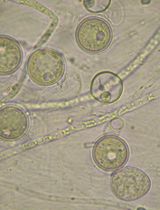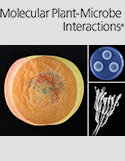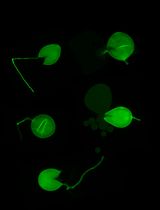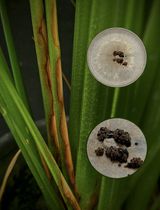- EN - English
- CN - 中文
Induction and Quantification of Patulin Production in Penicillium Species
青霉菌展青霉素生成的诱导和定量
发布: 2017年06月05日第7卷第11期 DOI: 10.21769/BioProtoc.2324 浏览次数: 9014
评审: Zhaohui LiuAnonymous reviewer(s)

相关实验方案

微生物提取物对卵菌辣椒疫霉菌和猝倒病疫霉的体外筛选
Mónica Trigal Martínez [...] María Ángeles Vinuesa Navarro
2025年09月20日 1199 阅读
Abstract
Patulin, a worldwide regulated mycotoxin, is primarily produced by Penicillium and Aspergillus species during fruit spoilage. Patulin contamination is a great concern with regard to human health because exposure of the mycotoxin can result in severe acute and chronic toxicity, including neurotoxic, mutagenic, and immunotoxic effects. Penicillium expansum is known as the main producer of patulin. This protocol addresses the cultivation procedure of P. expansum under patulin permissive conditions and describes the method of collection and detection of patulin.
Keywords: Penicillium expansum (扩展青霉)Background
Patulin is a polyketide lactone mycotoxin and is produced by several species of fungi including Penicillium, Aspergillus and other species. Among them, Penicillium expansum, which is a well-known postharvest pathogen causing decay of pomaceous fruits during storage, is the main producer. Patulin levels in apple products are of great concern because of the severe acute and chronic effects caused by the toxin. Therefore the patulin level in food is limited in many countries around the world. The European Commission (2006) has set maximum permitted levels in apple juices (50 μg/kg), solid apple products (25 μg/kg) and, above all, fruit-derived baby foods (10 μg/kg), as children are major consumers of apple derived products.
Studies on patulin in recent years have focused on environmental factors regulating patulin production, molecular basis of patulin biosynthesis and biodegradation of patulin. The methods of induction and quantification of patulin production are important in these studies. Patulin analysis in fruits usually follows the AOAC method 995.10 (Brause et al., 1996). After treatment with pectinase, patulin is extracted with ethyl acetate from the puree of decayed portion of fruits. Many methods have been developed for measuring patulin such as TLC, mass spectrometry and gas chromatography/mass spectrometry. Now, high performance liquid chromatography with ultra violet light detection (HPLC-UV) is the most frequently used method (Baert et al., 2007).
In this protocol, we address two methods of patulin induction in vitro and describe the specific parameters appropriate for HPLC-UV analysis of patulin.
Materials and Reagents
- 1,000 µl pipette tips (Corning, Axygen®, catalog number: TF-1000-R-S )
- 200 µl pipette tips (Corning, Axygen®, catalog number: TF-200-R-S )
- 10 µl pipette tips (Corning, Axygen®, catalog number: TF-300-R-S )
- Cheesecloth (Aladdin, catalog number: G6902 )
- 90 x 15 mm Petri dish (any brand will suffice)
- 10 ml centrifuge tubes (Sangon Biotech, catalog number: F601889 )
- 1.5 ml centrifuge tubes (Corning, Axygen®, catalog number: MCT-150-C )
- Filter (pore size 0.45 μm) (EMD Millipore, catalog number: SLHV033RB )
- Cellophane sheets (Bio-Rad Laboratories, catalog number: 1650963 )
- 24-well culture plates (Corning, Costar®, catalog number: 3524 )
- Penicillium expansum T01: was isolated by our laboratory and whole-genome sequenced (Li et al., 2015)
- Glycerol (AMRESCO, catalog number: M152 )
- Tween 20 (Sigma-Aldrich, catalog number: T2700 )
- Liquid nitrogen
- Sterile distilled water
- Water (HPLC grade) (Alfa Aesar, catalog number: 19391 )
- Acetonitrile (HPLC grade) (Alfa Aesar, catalog number: 22927 )
- Potato
- Dextrose (Macklin, catalog number: D823520 )
- Agar (HUAAOBIO, catalog number: HA0552 )
- Sodium nitrate (NaNO3) (Beijing Chemical Works, GB/T 647-1993)
- Potassium phosphate dibasic trihydrate (K2HPO4·3H2O) (Beijing Chemical Works, HG/T 3487-2000)
- Potassium chloride (KCl) (Aladdin, catalog number: P112133 )
- Magnesium sulfate heptahydrate (MgSO4·7H2O) (Macklin, catalog number: M813599 )
- Iron(II) sulfate heptahydrate (FeSO4·7H2O) (Aladdin, catalog number: F116341 )
- Sucrose (Beijing Chemical Works, HG/T 3462-1999)
- Yeast extract (Oxoid, catalog number: LP0021 )
- Hydrochloric acid (HCl) (AMRESCO, catalog number: 0369 )
- PDA medium (see Recipes)
- CY medium (see Recipes)
- Acidified distilled water (pH 4.0) (see Recipes)
Equipment
- Glass spreading rod (any brand will suffice)
- Hemacytometer (QIUJING, model: XB-K-25 )
- 100-1,000 µl pipette (Eppendorf, catalog number: 3120000267 )
- 10-100 µl pipette (Eppendorf, catalog number: 3120000240 )
- 0.5-10 µl pipette (Eppendorf, catalog number: 3120000224 )
- Centrifuge (Beckman Coulter, model: Microfuge 16 , catalog number: A46473)
- Tweezer (Thermo Fisher Scientific, catalog number: 402011 )
- High-performance liquid chromatography (WATERS Corp., MA, USA)
- Auto sampler (WATERS, catalog number: 2498 )
- Binary HPLC pump (WATERS, catalog number: 1525 )
- UV/Visible detector (WATERS, catalog number: 2487 )
- C18 column (5 μm, 250 x 4.6 mm) (GL Sciences, model: Inertsil® ODS-3 )
- Vortexer (Select BioProducts, catalog number: SBS100-2 )
- Optical microscope (Chongqing Optec Instrument, model: B Series Biological Microscope , catalog number: B203LED)
- Clean bench (Donglian Electronic & Technology Development, model: SCB-1520 )
- Constant temperature incubator (TAICANG, model: THZ-C )
Software
- Microsoft Excel
- Empower 3.0
- SPSS 13.0 (SPSS Inc., Chicago, IL, USA)
Procedure
文章信息
版权信息
© 2017 The Authors; exclusive licensee Bio-protocol LLC.
如何引用
Chen, Y., Li, B., Zhang, Z. and Tian, S. (2017). Induction and Quantification of Patulin Production in Penicillium Species. Bio-protocol 7(11): e2324. DOI: 10.21769/BioProtoc.2324.
分类
微生物学 > 微生物生物化学 > 其它化合物
植物科学 > 植物免疫 > 宿主-细菌相互作用
生物化学 > 其它化合物 > 展青霉素
您对这篇实验方法有问题吗?
在此处发布您的问题,我们将邀请本文作者来回答。同时,我们会将您的问题发布到Bio-protocol Exchange,以便寻求社区成员的帮助。
Share
Bluesky
X
Copy link












